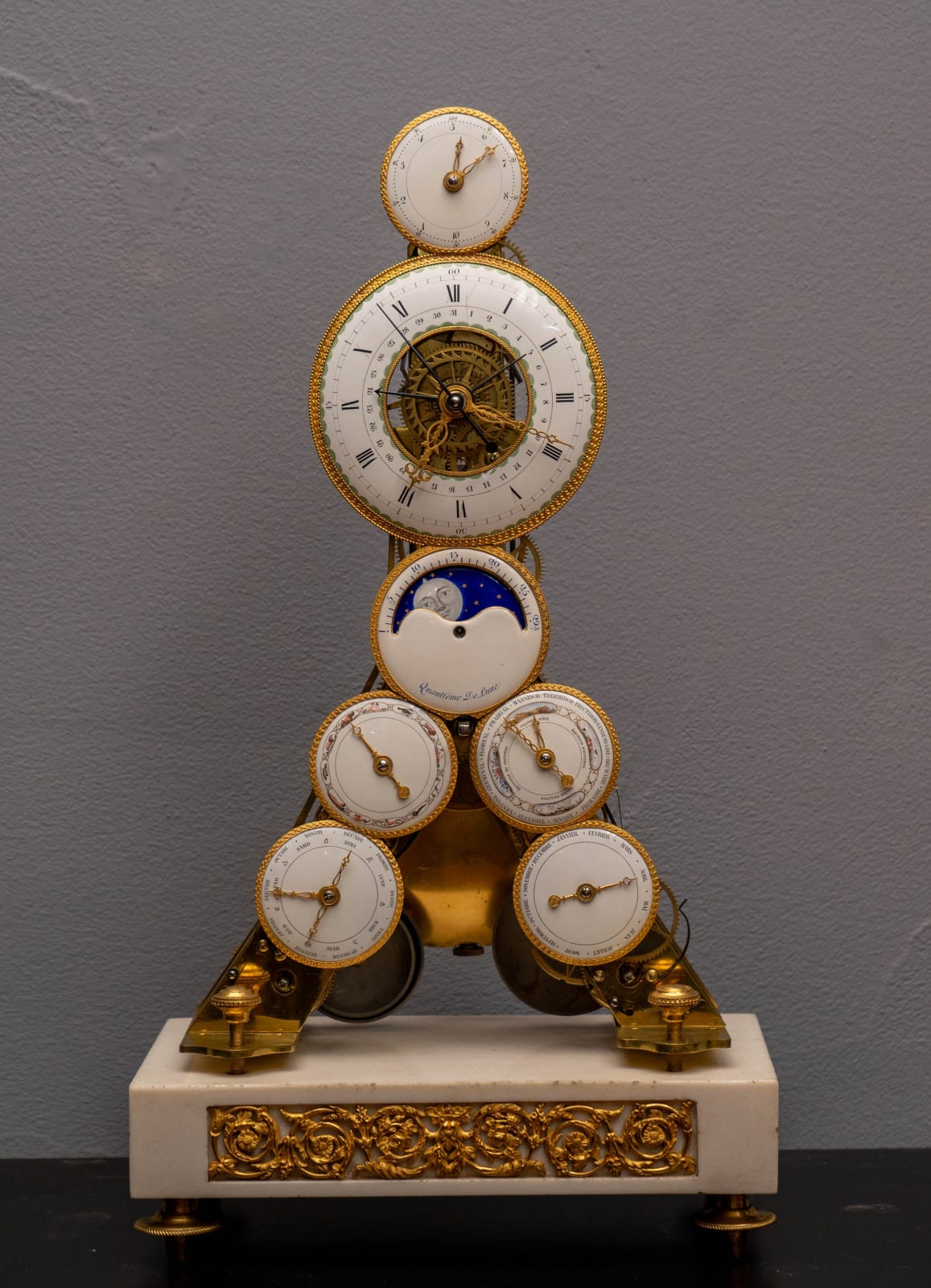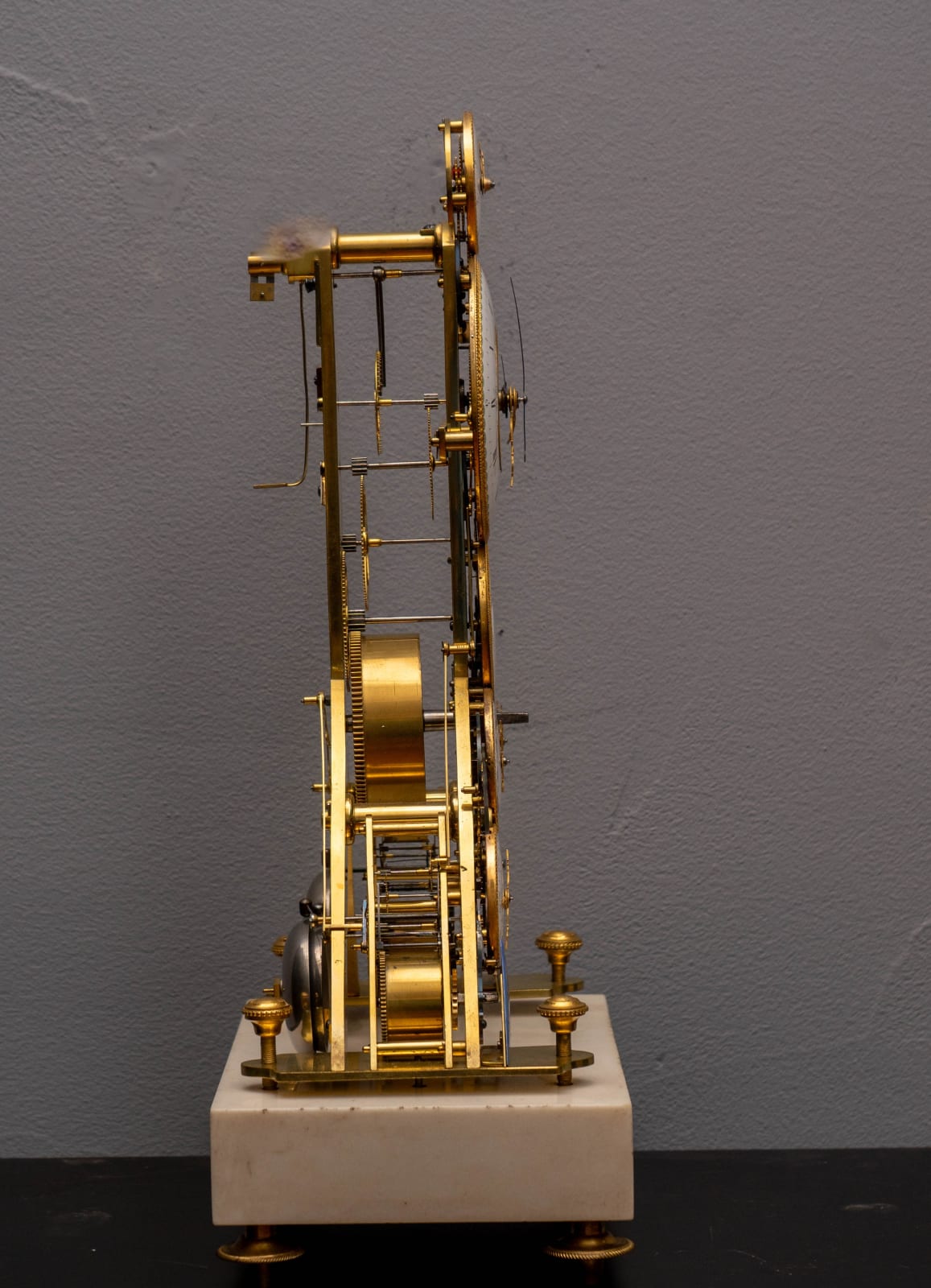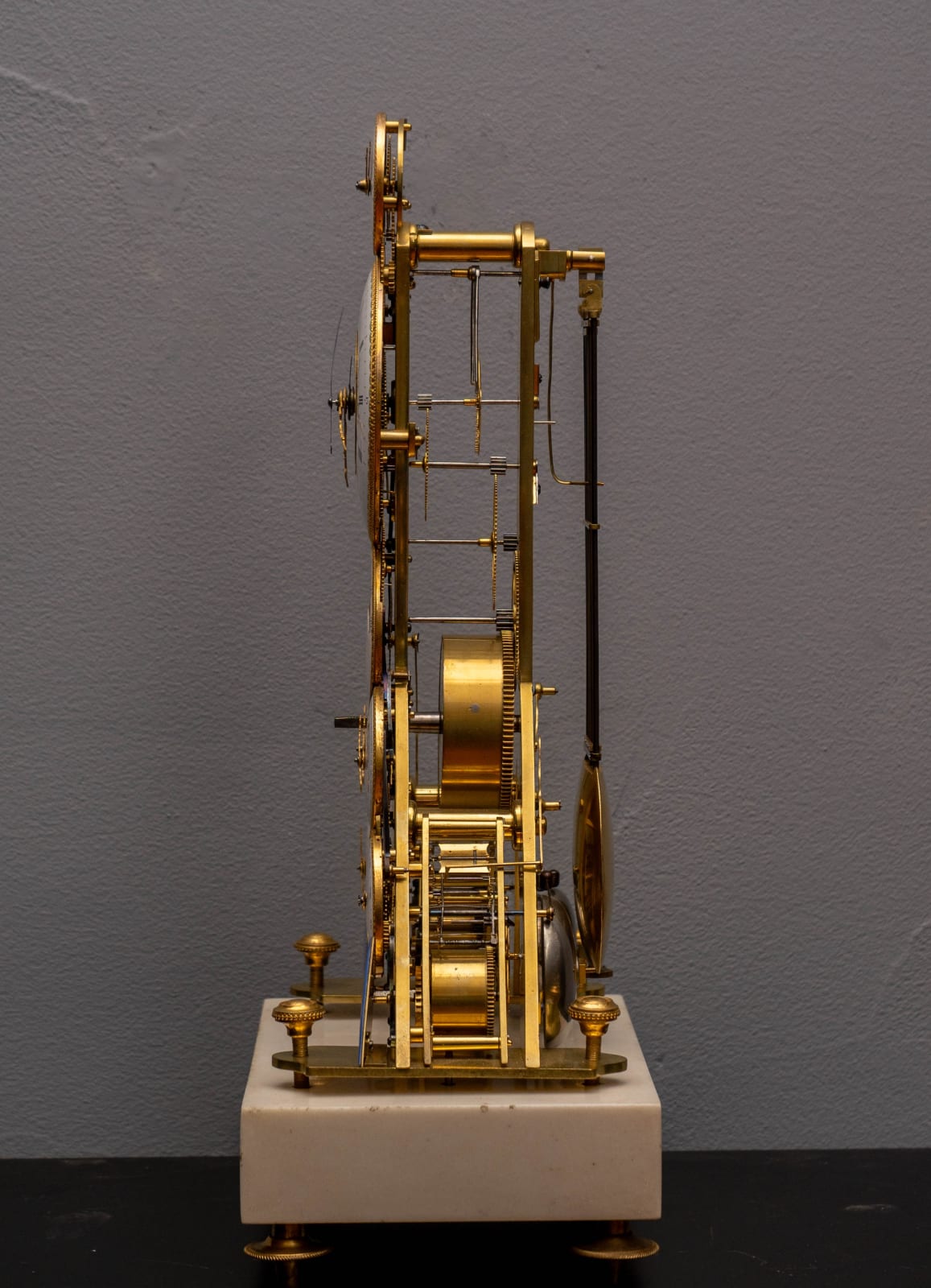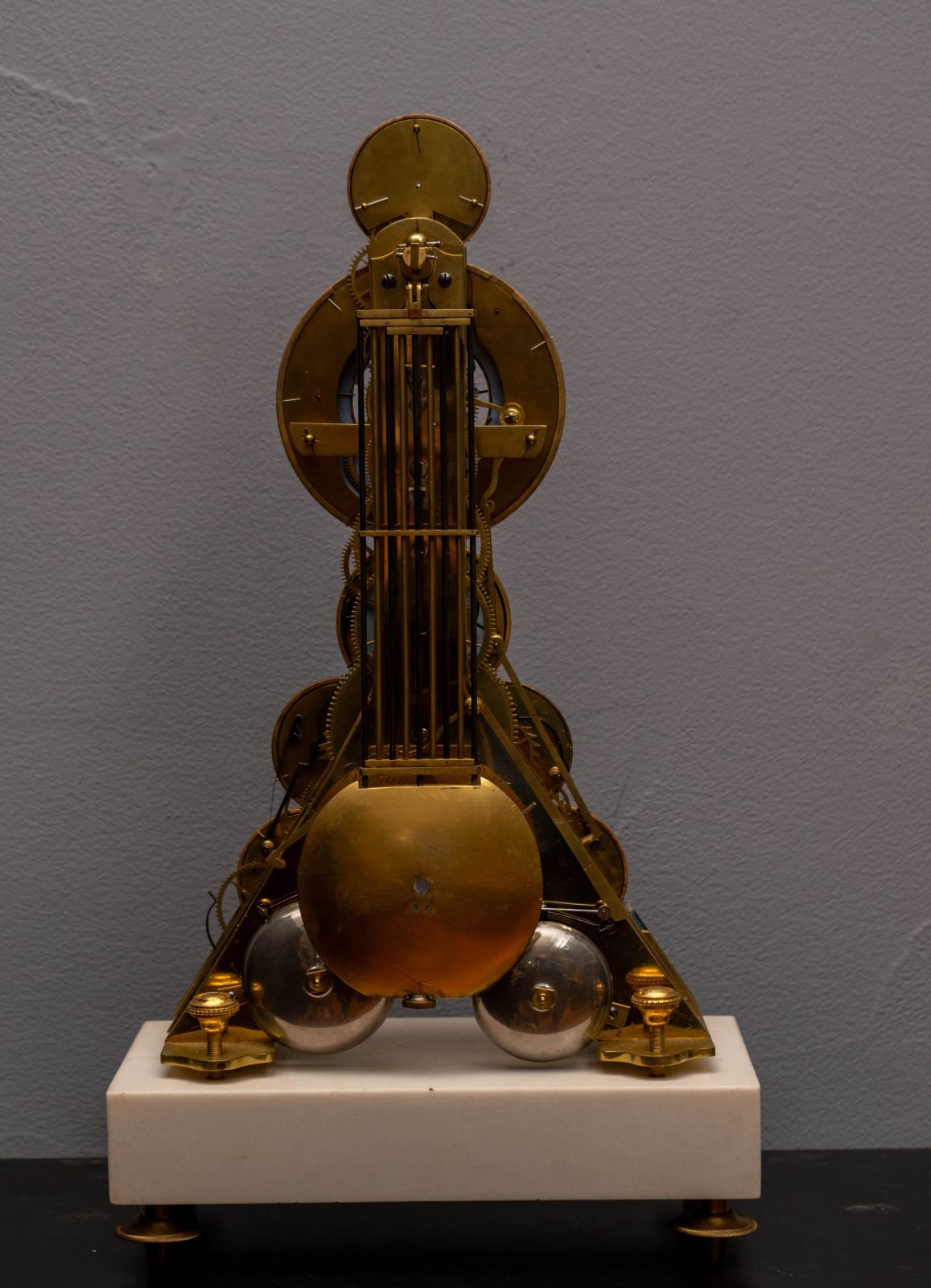Baudin
Further images
A skeleton clock (pendule squelete) with 7 dials and 15 indications, signed: "Baudin". The
upper dial indicates the hour of the day in decimal time (10 hours per natural day). The large
dial indicates duodecimal (conventional) time and two extra hands that respectively indicate
the date in the Gregorian and the Republican calender. The lower central dial shows the
phases of the moon calendar (Quantième De Lune) and the days in the moon calendar (29.5
days)
Beneath the three central dials, there are four more dials that respectively indicate:
Upper left: Zodiac with the respective constellations
Lower left: the outer ring indicates the day of the Republican décade, the inner ring indicates
the day of the Gregorian week and its corresponding planet.
Upper right: the months and seasons of the Republican calender
Lower right: the months of the Gregorian calender.
The clockwork has a going train with pin wheel escapement and central seconds indication. The half-second grid pendulum has spring suspension. To level the mechanism there are set screws in each of the four legs.
The striking train for the quarter hours is located in the left leg and strikes no two bells (b1 &
b2) In the right leg there is a striking train for the hours (b3).
The quarter hour striking train strikes once at 15 minutes (b1), twice at 30 minutes (b1-b2)
and three times at 45 minutes (b1-b2-b1). At the hour it strikes 4 times (b1-b2-b1-b2) and
subsequently the hour at b3.
The left striking train drives the hands of the two lower left dials, the right striking train
drives the hands of the right dials. The left winding mechanism is wound clockwise, the right
mechanism si wound counter clockwise. The windlasses of the respective springs are hidden
behind the blue enamelled cover plates. The date and moon date are driven yb the going
train.
The Revolutionary calender
The calender had 12 months of equally 30 days. The months were divided into three periods or décades of ten days. Every year starts on the autumnal equinox (when the sun is exactly of the equator). The days left to make a full year after the twelve months, were called jours supplémentaires or sanculotides. These were the day of virtue, the day of genius, the day of labour, the day of opinion, and the day of recompense. In leap years (les années sextiles) the day fohte revolution was adedot this range. The period fofour years that ended whti the day of the revolution was called a Franciade.
The poet Fabré d'Églantine was commissioned to devise new names for the months and days. months of the fall; vendémiaire, brûmaire, frimaire; months of winter; nivôse, pluviôse, nivôse; months of spring; germinal, floreal, priairial; months of summer; messidor, thermidor, fructidor.
The days of the décades were called: primedi, duodi, tridi, quartidi, quintidi, sextidi, septidi, octidi, nonidi, and décadi. Every day of the year also got its own name to replace the Catholic saints days. It was decided that days were given names of fruits, vegetables, animals, tools, etcetera. The quintidis should get the name of an animal, the décadis were to be given the name of agricultural implements.











